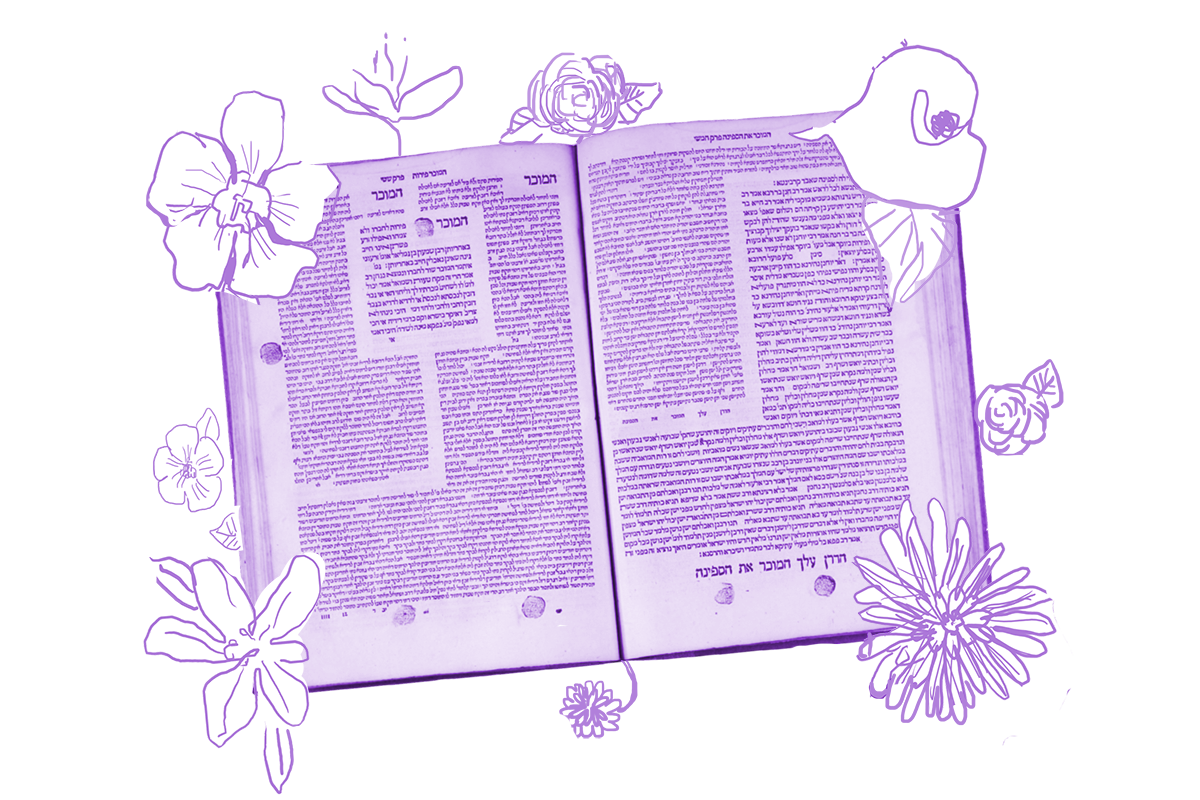In the mishnah on yesterday’s daf, we learned that the high priest has to wear very specific clothing in order to perform the Yom Kippur service, and that these clothes must be provided by public funds. However, today’s daf raises a question: What if a priest wants to wear garments that have special value to him personally? Specifically, what if the priest has a tunic, perhaps quite a fancy one, that was made for him by his mother?
Why mention the priest’s mother specifically? After all, priesthood is a status that is exclusive to males and passed down patrilineally, so it would seem that the mother of the priest is actually a somewhat extraneous figure. Yet the mother of the high priest appears with surprising frequency in the rabbinic imagination, often performing stereotypically maternal activities like providing food and clothing. Though the rabbis’ ideas about gender roles may seem a bit retrograde, they also are making space on the page for the importance of the priest’s female family members, even if these women aren’t serving a role that is technically legally required.
Such is the case on our daf, where the rabbis agree that even though the priest’s mother’s handiwork is not the clothing required for the Yom Kippur rite, it’s still possible to find a way for him to wear it, at least briefly:
After the public service has concluded, a priest whose mother has made him a tunic may wear it and perform a single element of the service, as long as he transfers its ownership to the public.
With your help, My Jewish Learning can provide endless opportunities for learning, connection and discovery.
This homemade garment may be worn for the performance of a Temple ritual as long as the priest agrees to make it public property. But since this requirement of public ownership applies to all of the priestly clothes — and indeed any tool — used for the Temple service, the rabbis then ask: Isn’t this obvious?
In other words, why bother mentioning the need for public ownership in the particular case of the mom-made tunic if it’s true across the board? The answer: Lest you think we are concerned that he will not transfer it as he should, it teaches us otherwise.
The rabbis answer that a garment made by the priest’s mother, though it serves no halakhic or functional purpose, is most likely to have sentimental value to the priest, and therefore the priest might be unwilling to give up his personal stake in it. That might cause us to imagine that its use would be forbidden out of concern that the priest would not in fact relinquish ownership of the garment to the public. The final determination is that we need not worry about this possibility and can trust that the priest will do what is required and transfer ownership of the tunic.
But by pointing out how tempting it might be for the priest to do otherwise, the rabbis are reminding us of the emotional power of the world that exists outside of the (for them, anyway) male-dominated world of ritual and rules, and encouraging even the most elite, skilled practitioners of that world to find ways to commemorate the labor and the love of those outside it.
Read all of Yoma 35 on Sefaria.
This piece originally appeared in a My Jewish Learning Daf Yomi email newsletter sent on May 16th, 2021. If you are interested in receiving the newsletter, sign up here.



